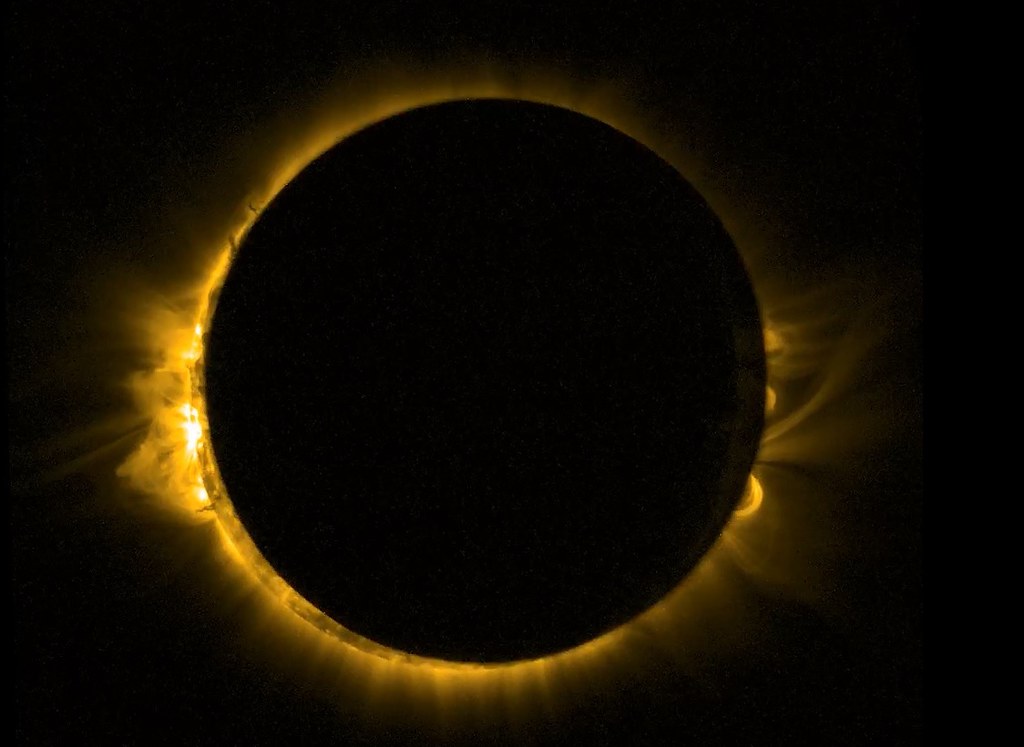
Millions of people have been gathering across 15 American states, as well as in Mexico and Canada today (Monday, April 8) waiting for this afternoon’s total solar eclipse which is expected to bring a magnificent show.
The Total Solar Eclipse in the US
Faced with a gray day of cloud and rain – somewhat hindering their view – huge crowds came together in the US from Texas to Maine, holding safety glasses and cameras with solar filters, in preparation for the great event.
More than 31 million people live in the path of totality – the course of the moon’s shadow blocking the sun – which the eclipse will trace in a north-east direction for around an hour after passing into Texas at 1.30pm CT.
Officials have said they expect a further four to five million people to join the gatherings, bringing an estimated $1.5bn tourism boost from what will be the country’s biggest travel day of the year.
This is how #SolarEclipse is looking from the Space 😍
How's the view ??? #SolarEclipse2024 #Eclipse2024 #EclipseSolar2024 pic.twitter.com/b6blpFJp6b
— SR ⁶⁹ (@ultimate__d) April 8, 2024
There’s another 21 years between the US and another coast-to-coast total eclipse, no doubt adding to the general excitement of the event and the keenness to witness the moments of darkness and stillness. For many, however, the experience is expensive, with increasing airfares and astronomical hotel rates.
What’s Happening Today?
Nasa will livestream the eclipse for people who cannot see the show, or live outside the path of totality. Nearly everywhere in North America will experience a partial eclipse of varying degrees depending on the proximity to its center course. Meanwhile, the space agency has its Eclipse Explorer website for people to check what they will see from their location.
Interest in the eclipse is so widespread that several states and municipalities have declared states of emergency in expectation of enormous crowds.
During a solar eclipse, the gaps between leaves on trees act as multiple pinhole cameras,
and each gap projects its own crescent-shaped image of the eclipsed sun onto the ground.
📹gottigreen
pic.twitter.com/PHLwhslMZu— Science girl (@gunsnrosesgirl3) April 8, 2024
Many cities in the path are hosting public viewing events and offering eclipse safety glasses for free. At a handful of zoos, researchers will be joining citizen observers to see how animals behave.
Science experiments will also be carried out. Nasa will fire rockets into the moon’s shadow to study how the Earth’s upper atmosphere is affected by the momentary dimming of sunlight, and volunteers will capture images of the solar corona during the total eclipse, or help analyze them following it to better understand its effects and mysteries.
A partial eclipse will also be visible from western parts of the UK just before sunset – weather permitting.
“Very simply, if you draw a line from about Fowey in Cornwall to Berwick upon Tweed in Northumberland, then everything west of that line might just get a view of the Moon biting the edge of the Sun as it disappears over the horizon,” reports the BBC.
What is a Solar Eclipse and what makes this one special?
A solar eclipse takes place when the Moon moves between the Earth and the Sun, blocking some or all of the Sun’s rays from reaching the Earth. The event requires the Sun, the Moon, and the Earth to be in exactly the right alignment for the Moon to cast a shadow on our planet.
When this occurs, the Moon casts two types of shadows. One results in a partial solar eclipse, which covers only part of the Sun, and the other is called a total solar eclipse, during which the Sun’s disc is entirely covered by the Moon, except for a soft halo of scattered light coming from the gas giant’s outer atmosphere.
See all the latest news from Greece and the world at Greekreporter.com. Contact our newsroom to report an update or send your story, photos and videos. Follow GR on Google News and subscribe here to our daily email!



